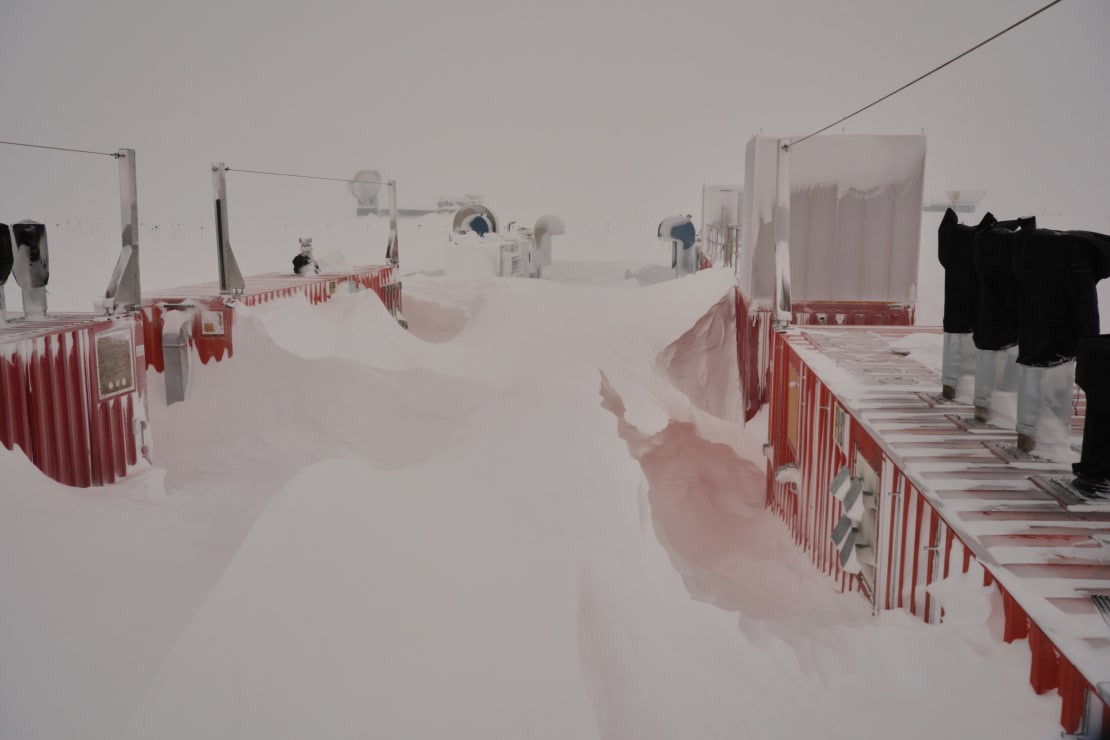
All around the South Pole, flags are used as markers—they can designate pathways or identify spots where equipment is buried below the surface. They’re especially important in winter to avoid getting lost in the dark when the already cold temperatures are at their coldest. But even in daylight, windy conditions at the Pole can dramatically reduce visibility to equally hazardous levels. Just look at the image below of some IceTop markers, no discerning the surface from the sky. All that wind really pushes the snow around. Now that the sun is out, it’s easier to see where all the snow has accumulated. The tall drifts around the IceCube drill camp will need to be removed before drilling new holes for the IceCube Upgrade can begin.


